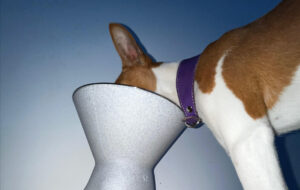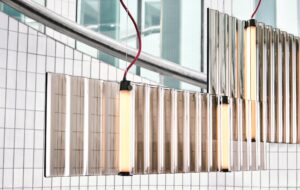|
|
||
|
China is seeking to rebrand itself. The popular perception is that things are made and faked in China, but that there is a paucity of original design talent. Government officials now want to add “Designed in China” to the “Made in China” stickers that lurk beneath most of the products we use. No expense was spared to assert this at Beijing Design Week, now in its second year: an impressive ticker-tape parade of blue banners advertising the event lined the 30km processional route from the airport to the city. The thick smog, meanwhile, was a toxic reminder of China’s manufacturing power – two blocks away, buildings disappeared in the haze. The opening ceremony took place at the bizarre Millennium Monument, a huge, stepped, sundial-like structure sealed off by the military and crowned by a missile-shaped object that looked like it might be pointing toward Washington. We clapped as designers, many of them Chinese (though most of these were architects), walked down a long red carpet flanked by beauties wearing white dresses and rictus smiles. This year, London was the partner city (plenty of designers, no manufacturing). Drafted in to represent the capital were Jimmy Choo creative director Tamara Mellon and lighting impresario Paul Cocksedge, who created a 20m-long, 50-tonne sculpture inscribed with Chinese and English verse for the opening ceremony. Called Manuscript, it looked like a stack of papers being blown away by the wind. After some lengthy speeches by Chinese dignitaries, X-factor-style buzzers were pressed to release anti-climactic clouds of steam. An impressive light show was then projected on to the monument, which seemed to age, dissolve and transform before our eyes. The exhibitions were split between three dramatic locations, so impressive they couldn’t help overshadowing the work on show. In Dashilar Alley, a traditional hutong district, festival exhibits merged with old Beijing’s rich street life. Ab Rogers presented A Day in the Life of Ernesto Bones, for which he invited 24 creatives to flesh out a portrait of an imaginary decadent. In an old electrical relay factory, BDW’s creative director Aric Chen presented the childhood possessions of Chinese actress Zhou Xun, who supplied a Proustian commentary. There was also 751 D-Park, a former power station and factory district that once produced military hardware, now an aesthetic post-industrial ruin just north of Beijing’s art district that has been sympathetically retrofitted as gallery spaces. These contained a series of disappointing national pavilions, many featuring pictures of designs rather than the objects themselves, as if to save on shipping. The Dutch exhibit – Smart Cities, Healthy Cities – was by far the most engaging, and generously incorporated Chinese inventions that the curators felt echoed the spirit of ingenious sustainability they endorsed (glue jeans, bicycles that painted their own cycle lanes, umbrellas that defied high winds). At the enormous China National Museum on Tiananmen Square, the inaugural Beijing International Design Triennial took place. There were five halls displaying aspects of “good design”, intended to introduce a domestic audience to the very best international design. The most conceptual of these exhibits was “What If …” curated by Fiona Raby and Anthony Dunne in collaboration with artist Jin Jiangbo, which explored the dream space between reality and the impossible. One wonders what Chinese viewers made of a cloudbusting ice-cream truck that harvested vanilla snow from the sky. 2011 Beijing Design Week and The First Beijing International Design Terminal |
Image China Design News
Words Christopher Turner |
|
|
||

















